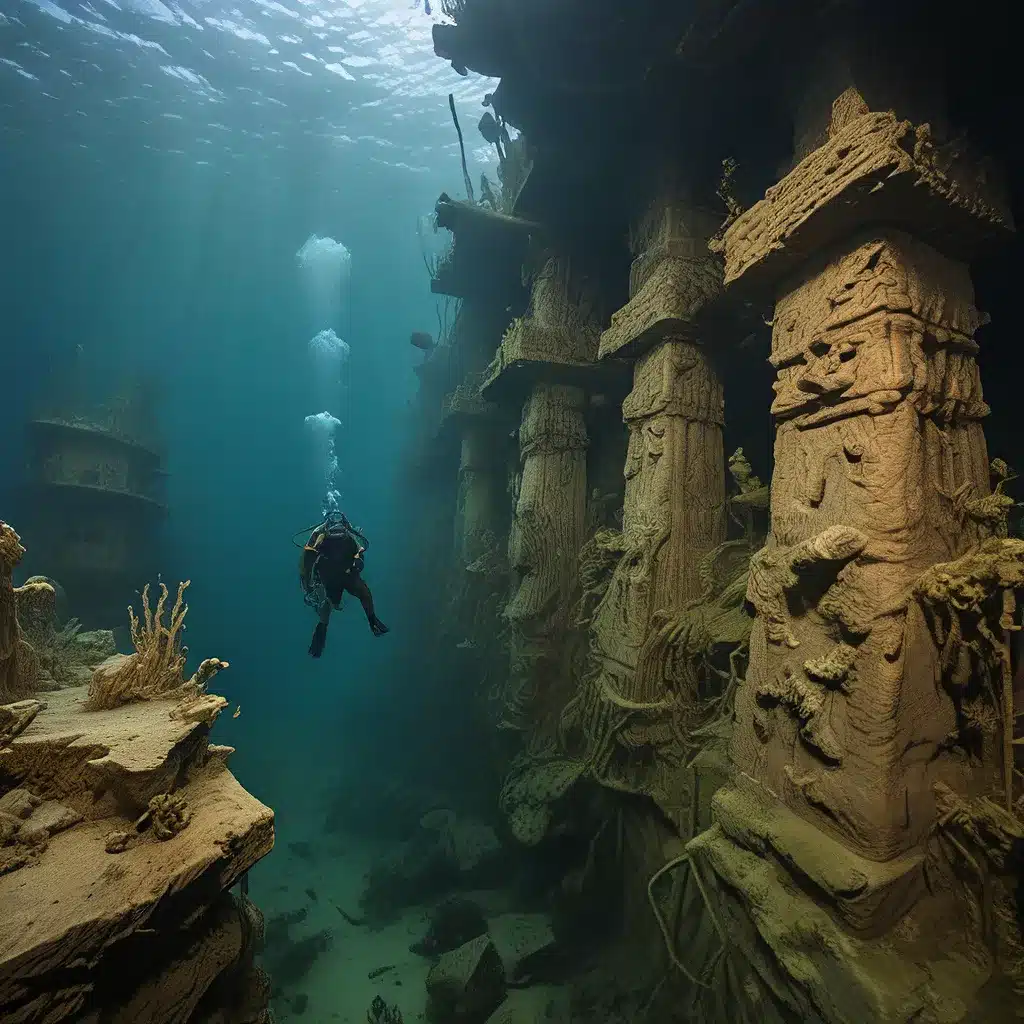
Beneath the shimmering waters of lakes, rivers, and seas, a captivating world of submerged archaeological wonders awaits exploration. From sunken ships and ancient shipwrecks to underwater forests and the remnants of lost civilizations, these submerged realms hold the keys to unlocking the secrets of our shared past. In this captivating exploration, we’ll dive deep into the intriguing mysteries and remarkable discoveries that lie hidden beneath the surface, shedding light on the rich histories and cultural legacies that have been preserved in these underwater sanctuaries.
Uncovering the Secrets of Submerged Cities and Civilizations
Throughout history, catastrophic events, rising sea levels, and human activities have led to the submersion of numerous coastal settlements and ancient cities. These submerged archaeological sites have become a treasure trove for researchers, offering a unique window into the lifeways and technological advancements of long-lost civilizations.
One of the most renowned examples of a submerged ancient city is the legendary Atlantis, a mysterious civilization described by the ancient Greek philosopher Plato. While the existence of Atlantis as a real historical entity remains a subject of debate, numerous underwater expeditions have uncovered intriguing artifacts and architectural remnants that have fueled the ongoing fascination with this elusive lost world.
The Lost Kingdoms website delves into the captivating stories of other submerged cities that have captured the imagination of the public, such as the ancient underwater ruins of Pavlopetri off the coast of Greece, the Cleopatra’s Palace complex in Alexandria, Egypt, and the Lion City in China’s Xin’an River. These remarkable discoveries have not only expanded our understanding of ancient civilizations but have also sparked a renewed interest in the exploration of underwater archaeological sites.
Uncovering the Secrets of Shipwrecks and Underwater Graveyards
Alongside the remains of ancient cities and lost civilizations, the depths of our waterways are also home to a myriad of shipwrecks and underwater graveyards that have captivated the attention of maritime historians, archaeologists, and adventurers alike.
From the Lake Union in Seattle, Washington, to the Lake Washington in the same region, these bodies of water have become veritable treasure troves of submerged artifacts and historical relics. The efforts of organizations like the Center for Wooden Boats and the Global Underwater Explorers (GUE) Seattle have led to the discovery of a diverse array of sunken vessels, including boats, cars, motorcycles, and even a Vespa scooter, all of which have provided invaluable insights into the maritime history and industrial development of the region.
Similarly, Lake Washington has yielded its own trove of remarkable finds, with the bottom of the lake serving as a resting place for numerous aircraft wrecks, ferries, barges, and even Navy minesweepers. These submerged artifacts offer a glimpse into the region’s wartime history and the industrial activities that once thrived along the shores of these lakes.
Uncovering the Mysteries of Underwater Forests and Submerged Landscapes
The depths of our waterways hold not only the remnants of human civilization but also the vestiges of ancient natural landscapes that have been submerged over time. One of the most captivating examples of this phenomenon can be found in the underwater forests of Lake Washington and Lake Sammamish, located in the Pacific Northwest region of the United States.
These submerged forests, which date back over 1,100 years, are the result of a seismic event that caused landslides and the subsequent submersion of heavily wooded areas. The cool waters and low oxygen levels of these lakes have allowed the trunks of the ancient trees to be remarkably well-preserved, creating an otherworldly and disorienting experience for divers who venture into these underwater realms.
Researchers, such as Ben Griner of Coastal Sensing, have explored these submerged landscapes using advanced sonar technology, uncovering a wealth of information about the region’s historic ecology and the geological processes that shaped the area. These underwater forests not only offer a glimpse into the past but also serve as a stark reminder of the dynamic and ever-changing nature of our planet.
Preserving and Protecting Submerged Archaeological Treasures
As the exploration of submerged archaeological sites and underwater realms continues to capture the public’s imagination, the importance of responsible stewardship and preservation of these fragile resources has become increasingly evident.
Organizations like the Maritime Documentation Society and the Global Underwater Explorers (GUE) Seattle have taken on the vital role of documenting and protecting the submerged artifacts and historical sites they encounter. Their efforts, which include mapping, photographing, and cataloging the underwater discoveries, aim to create public awareness and expand the wealth of history for present and future generations.
The conservation and management of these submerged archaeological treasures require a multifaceted approach, involving collaboration between researchers, government agencies, and local communities. Strategies such as restricted access, underwater heritage site management, and public education can help ensure the long-term preservation of these fragile underwater environments and the invaluable historical and cultural information they hold.
As we continue to explore the depths and uncover the hidden secrets of our waterways, it is crucial that we balance the thrill of discovery with a steadfast commitment to responsible stewardship and the protection of our shared underwater heritage. By doing so, we can ensure that the remarkable submerged archaeological sites and underwater realms continue to captivate and inspire generations to come, serving as a living testament** to the resilience and ingenuity of our collective human past.


